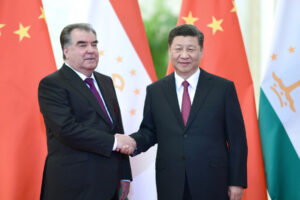In its quest to modernise and catalyse economic growth, Namibia has embraced the public-private partnership (PPP) model, a globally acclaimed approach to infrastructure development and service delivery.
It offers a ray of hope for economic growth, providing a framework for collaboration between the government and the private sector.
However, is this policy truly favourable to all parties involved, particularly local innovators who form the backbone of our economy’s future?
Why has the act not borne fruit in terms of implementation of any PPP projects since its inception? Are key elements perhaps lacking?
The PPP policy appears to offer an equal playing field.
It outlines how to identify projects suitable for PPPs, with an emphasis on value for money and innovation.
Further, it provides an avenue for unsolicited proposals, offering an opportunity for any individual or entity to suggest a potential project for a PPP agreement.
In theory, these provisions should enhance innovation and competitiveness among Namibian businesses.
On closer inspection, however, this seemingly egalitarian policy might not be as beneficial for local innovators as it initially appears.
While the policy’s intent is commendable, its execution and implications raise some serious concerns that threaten to stifle the innovative spirit of local entrepreneurs.
PROSPECTS AND PITFALLS
For starters, the policy mandates that PPPs be considered only for projects of “significant scale” with a “complex risk profile”.
While this might seem reasonable in the context of public expenditure and risk management, it inadvertently creates an insurmountable barrier for small-scale innovators who may lack the resources or expertise to undertake large projects or navigate complex risk landscapes. Secondly, the policy’s emphasis on ‘value for money’ and ‘whole-of-life costing’ could dissuade innovators from submitting proposals.
Developing a comprehensive feasibility study that satisfies these conditions requires substantial financial investment and technical expertise.
This upfront cost, coupled with the risk of not winning the bid, might discourage innovators from participating.
The procedure for handling unsolicited proposals also leaves much to be desired.
Although it ostensibly encourages participation by allowing anyone to identify a potential project, the subsequent stages of the process are fraught with issues.
The original project proponent (OPP) who submits the unsolicited proposal is given a 10% preference in the bid evaluation.
However, this might not be enough to offset the competitive advantage enjoyed by larger, more established international entities, as the bidding is, by default, also open to international bidders.
Moreover, the policy allows the government to take ownership of the unsolicited proposal and the Concession Agreement, even if the project is not awarded to the OPP.
This implies that an innovator’s idea could be implemented by another entity without the innovator benefiting from its execution.
Such a scenario could foster a climate of apprehension among innovators, who might fear that their ideas will be appropriated without sufficient compensation or recognition.
PARTICIPATION
In essence, the current PPP policy, while aiming to foster public-private collaboration and innovation, may inadvertently be stifling the very creativity it seeks to promote.
The policy needs to be reevaluated and adjusted to ensure it truly supports and nurtures local innovators, rather than disadvantaging them against international players from developed countries.
One possible solution could be to introduce a tiered approach to project evaluation, whereby smaller, less complex projects are also considered for PPPs and some projects secured for local innovators only.
This would provide an opportunity for small-scale innovators to participate in the process and gain experience without having to bear an excessive risk burden while competing with international players.
Furthermore, the policy could be amended to ensure fair remuneration for innovators whose proposals are implemented, even if they are not the ones executing the project.
This would go a long way towards protecting the intellectual property rights of innovators and encouraging more individuals and entities to submit innovative proposals that are unique.
It would also be wise to secure local resources and build the Namibian economy without profits generated locally being siphoned to other countries.
OUR FUTURE
Namibia’s future rests on its ability to foster and nurture innovation and contribute to its local economy independently.
As we stand on the brink of a new era, it’s crucial that our policies reflect this vision.
The PPP policy, in its current form, seems to fall short of this ideal as it is not fully aligned with Namibia’s Vision 2030 that outlines a strategy for promoting local industrialisation and economic growth within the country.
It’s time for a rethink, a recalibration, to ensure that our innovators, are supported and incentivised, rather than disadvantaged.
Let’s not forget that, ultimately, the PPP policy should not only be about public-private partnerships, but also about partnerships with our most precious resource – our local innovators.
- Stanley Gariseb is a doctor of engineering student, an engineering manager at the Roads Authority and is passionate about innovation and technology. This article is written in his personal capacity.
Source : Namibian
















